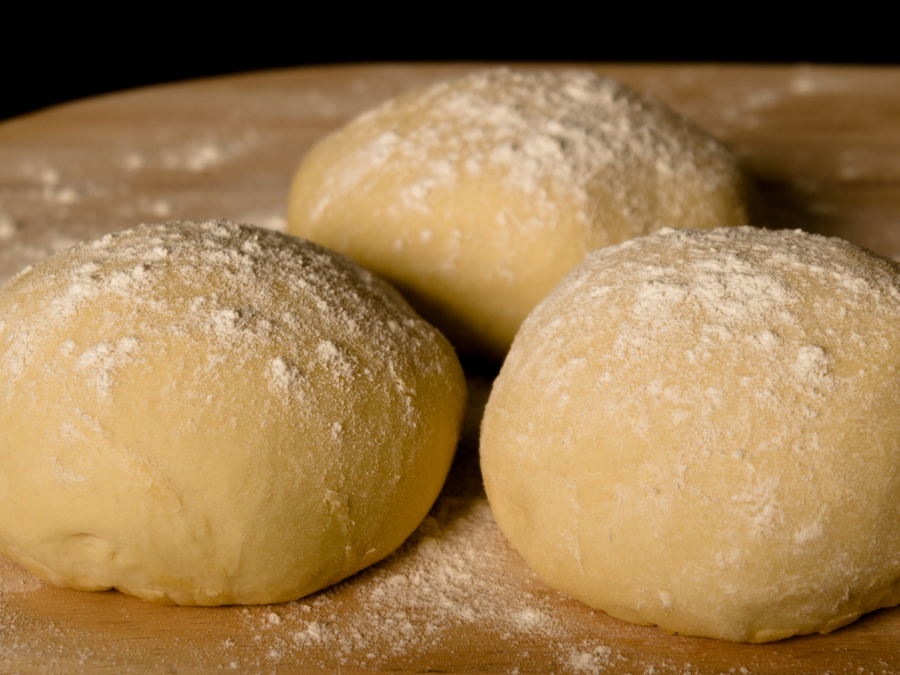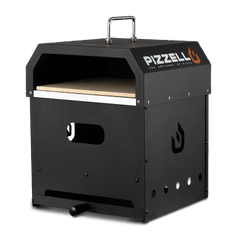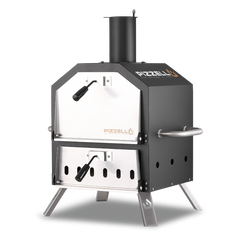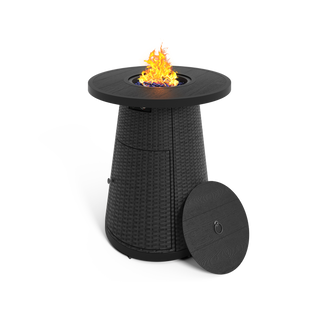Master Poolish Pizza Dough for Light and Airy Crusts

What Is Poolish Pizza Dough and Why Is It Special?
Poolish pizza dough is revered for its ability to enhance the texture and flavor profile of pizza crust through a precise fermentation process. It represents a link between art and science within the realm of pizza making, merging traditional techniques with exacting standards for ingredients and proportions.
Understanding the Basics of Poolish in Pizza Making
Poolish is a type of preferment, a mixture of flour, water, and a small amount of yeast. It's used as a dough starter to improve the final pizza dough's quality. Typically a poolish contains equal parts of flour and water by weight, creating a batter-like consistency that is allowed to ferment. During this fermentation, several key processes occur:
- Flavor Development: As yeast ferments, it produces gases and alcohol, which contribute to a nuanced flavor.
- Increased Hydration: The longer hydration time of poolish helps the flour absorb more water, improving the dough’s extensibility.
- Texture: Usage of poolish leads to a lighter, airier crust with a complex array of bubbles.
By integrating poolish into the recipe, pizza dough acquires superior taste and texture characteristics that are difficult to achieve with immediate-mix dough methods.
The fermentation also benefits the dough's handling properties, leading to the formation of a well-structured and easily workable pizza base.
Is Poolish the Same as Sourdough? Or Biga?
Although poolish, sourdough, and biga are all forms of preferments, they are distinct in their composition and the end results they produce in baking.
Sourdough Starter: This is a culture of wild yeast and bacteria. It's maintained over long periods and imparts a tangy flavor due to the presence of lactic acid bacteria. Sourdough starters are typically thicker than poolish and have more complex bacterial ecosystems.
Biga: An Italian preferment similar to poolish, biga generally has a lower hydration level, resulting in a thicker consistency. It contains only a minute quantity of yeast, leading to a slower fermentation that nevertheless contributes to the dough's strength and flavor profile.
The selection among these depends on the desired characteristics of the pizza dough, such as taste complexity, crust texture, and the handling qualities of the dough. While poolish and biga aim for subtle flavor enhancement and a light open crumb, sourdough starter emphasizes a pronounced tangy flavor and a chewier texture.
The Benefits of Using Poolish in Pizza Dough

Poolish is known for its ability to improve various aspects of dough, impacting flavor, aroma, and consistency for a more delicious pizza experience.
The flavor of pizza dough made with poolish is notably complex and refined due to the slow fermentation process. Fermentation allows the yeast to fully metabolize the sugars in the flour, creating a dough with a deeper, subtler, and richer taste profile.
Poolish contributes to a more pronounced aroma as well, which can be a mouthwatering precursor to the actual taste of the pizza.
When it comes to consistency, poolish enhances both the texture and structure of pizza dough. The long fermentation time develops gluten networks, yielding dough that is both elastic and extensible. Dough made with poolish is easier to shape and is less prone to tearing, facilitating the creation of an ideal base for pizza. The gluten development also results in a better crumb structure, characterized by desirable air bubbles, which are key for a light and airy crust.
Moreover, poolish not only improves the tactile qualities of the dough but its visual appeal as well. Pizzas crafted from poolish dough typically showcase a more appealing crust with a beautiful array of air pockets, contributing to a superior pizza experience that is both visually enticing and satisfying to eat.
Step-by-Step Guide to Making Poolish Pizza Dough

Day 1: Making the Poolish
- 166g water (room temperature)
- 1.3g dry yeast
- 166g tipo 00 flour or bread flour
- Stir until well combined (about 30 seconds).
- Cover the bowl with plastic wrap and let it rest at room temperature for 1 hour.
- Refrigerate the poolish for 20-24 hours.
Day 2: Making the Pizza Dough
- Remove the poolish from the refrigerator and let it sit at room temperature for 1 hour.
- In a large mixing bowl, combine:
- All of the poolish
- 388g water
- 692g tipo 00 flour or bread flour
- Mix until the ingredients are just combined. The dough will be very wet and sticky.
- Cover the bowl and let the dough rest for 30 minutes (this is called autolyze).
- Add 22g salt to the dough.
- Knead the dough for about 10 minutes until smooth and elastic. You can do this by hand or with a stand mixer.
- Place the dough in an oiled container and let it bulk ferment at room temperature for 1 hour.
- Divide the dough into 4 equal portions (about 230-245g each).
- Shape each portion into a tight ball.
- Place the final dough balls in a covered container or dough box and refrigerate for about 24 hours.
Day 3: Baking the Pizza Dough
- Remove the dough from the refrigerator 1-2 hours before baking to allow it to come to room temperature.
- Preheat your pizza oven to its highest setting (ideally 450-500°F/230-260°C) with a pizza stone or steel if you have one.
- Gently stretch each dough ball into a thin round.
- Add your desired toppings.
- Bake the pizza for about 8-12 minutes, or until the crust is golden and the cheese is bubbly.
Tips:
- Use a kitchen scale for accurate measurements.
- The long fermentation time develops flavor and improves texture.
- Don't overwork the dough when shaping to preserve air bubbles.
- A very hot oven is key for a crispy crust.
This method takes time but results in a flavorful, light, and crispy pizza crust.
Troubleshooting Poolish Pizza Dough
Perfecting poolish pizza dough requires attention to hydration, proper fermentation, and the balancing of flavors. Getting these right will lead to that light, airy texture that is the hallmark of great pizza dough.
Dealing with Overly Wet Pizza Dough When Using Poolish
When the pizza dough is too wet and sticky, a common issue is often the hydration level in the poolish. It's essential to maintain a balance; consider reducing the water slightly or adding a bit more flour to the dough to reach the desired consistency. During the dough-making process, one should aim for a dough that holds its shape but is still tactilely pliable. If you're encountering excessively wet dough:
- Reduce water: Cut back the water amount in the main dough by 5-10%.
- Increase flour: Slightly increase the amount of flour, ensuring you maintain the original flour-to-water ratio of the poolish.
- Work surface: Keep the work surface well-floured when kneading to prevent sticking.
Fixing Dough That Doesn't Rise Properly with Poolish
Dough that fails to rise may be due to an issue with the yeast or fermentation process. The complex flavor typical of a poolish-based dough depends on successful fermentation. If your poolish pizza dough does not rise correctly, consider these adjustments:
- Check yeast viability: Ensure that the yeast is not expired and is still active.
- Fermentation time: Extend the fermentation time, giving the yeast more time to work.
- Proofing environment: Proof the dough in a warm, draft-free area to encourage rising.
Adjustments to Make for Different Types of Pizza with Poolish Dough
Poolish dough can be versatile, suitable for a range of pizza styles from Neapolitan-style pizza to focaccia. Depending on which style you aim for, tweaks may be necessary:
- For a Neapolitan-style pizza that requires a light and airy dough, stick closely to the traditional hydration levels of the poolish, and use a high-temperature oven.
- When creating focaccia, increase the oil content for a softer crust, and consider a longer, colder fermentation to enhance flavor.
- For a general pizza night, where versatility is key, find a middle ground in hydration, and consider using all-purpose flour instead of specialized 00 flour to be more forgiving for various toppings and styles.













 Aluminum Dining Table
Aluminum Dining Table
 WPC Dining Table
WPC Dining Table
 HDPE Dining Table
HDPE Dining Table
 Cart
Cart
 Gas Burner
Gas Burner
 Hat
Hat
 Apron
Apron
 Swivel Rocker Set
Swivel Rocker Set
 Textilene Chairs
Textilene Chairs
 HDPE Chairs
HDPE Chairs
 Wicker Counter Height Barstools
Wicker Counter Height Barstools
 Metal Counter Height Barstools
Metal Counter Height Barstools


























